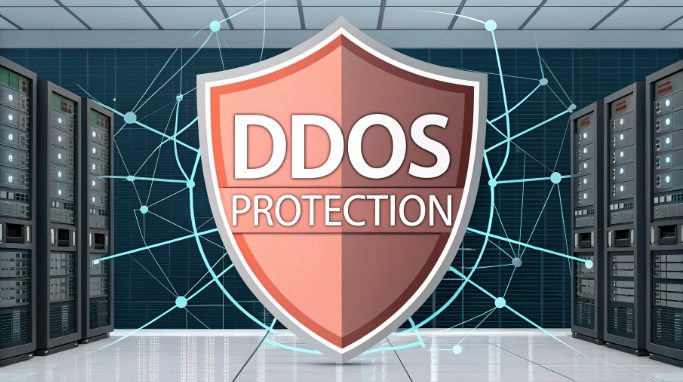Why is DDoS Protection So Expensive?

In today’s hyperconnected digital landscape, DDoS protection has become mission-critical for organizations running online services. The sophistication and scale of modern DDoS attacks have reached unprecedented levels, requiring equally sophisticated defense mechanisms. As cybersecurity professionals, we frequently encounter questions about the substantial investment required for enterprise-grade DDoS mitigation server. This technical deep-dive examines the complex infrastructure and operational factors that contribute to DDoS protection pricing, revealing why robust protection commands premium pricing in today’s threat landscape.
The Foundation: Infrastructure Costs
At its core, effective DDoS protection requires massive distributed infrastructure. The sheer scale of modern DDoS attacks necessitates an extensive global network of defenses. Unlike simple firewalls or WAFs, DDoS mitigation demands:
- Extensive networks of high-capacity scrubbing centers strategically positioned worldwide, each capable of processing enormous volumes of traffic simultaneously
- Globally distributed points of presence (PoPs) for traffic absorption, ensuring seamless service continuity even during massive attacks
- State-of-the-art enterprise-grade routing equipment with advanced packet processing capabilities and sophisticated filtering mechanisms
- Industrial-scale redundant power systems and cooling infrastructure to maintain continuous operation under extreme conditions
- Multiple layers of redundancy across all critical systems to ensure zero downtime
- Advanced network backbone infrastructure capable of handling multi-terabit traffic loads
Technical Personnel Requirements
The human element of DDoS protection represents a crucial investment that directly impacts service quality. A robust security operation requires highly specialized expertise across multiple domains:
- Elite security engineers with extensive protocol analysis expertise and deep understanding of attack methodologies
- Experienced network operations specialists maintaining round-the-clock monitoring and rapid response capabilities
- Dedicated research teams developing cutting-edge mitigation algorithms and staying ahead of emerging threats
- Specialized incident response teams capable of handling large-scale, sophisticated attacks
- Systems architects designing resilient infrastructure capable of withstanding evolving attack vectors
- Data scientists developing and maintaining machine learning models for attack prediction and mitigation
- Security analysts conducting continuous threat intelligence gathering and analysis
Advanced Protection Capabilities
Modern DDoS protection employs sophisticated technical solutions that require continuous investment and development:
- Advanced machine learning systems capable of identifying and responding to novel attack patterns in real-time
- Sophisticated traffic analysis engines that can process billions of packets per second
- Proprietary mitigation rule development incorporating years of threat intelligence
- Protocol-specific protection mechanisms covering the entire network stack
- Zero-day attack detection systems utilizing behavioral analysis and anomaly detection
- Advanced traffic fingerprinting algorithms for precise attack identification
- Automated mitigation systems capable of responding within milliseconds
- Complex load balancing systems distributing attack traffic across multiple scrubbing centers
Operational Expenses
The ongoing operational costs represent a significant portion of service delivery expenses, encompassing:
- Massive bandwidth requirements for handling both legitimate traffic and attack volumes
- Substantial power consumption for operating global scrubbing center networks
- Continuous hardware maintenance, upgrades, and replacement cycles
- Rigorous compliance certifications maintenance including SOC 2, ISO 27001, and other industry standards
- Extensive monitoring and logging systems for maintaining audit trails
- Regular infrastructure testing and stress testing procedures
- Continuous software licensing and updates across the protection network
Market Dynamics
Several complex market factors influence protection costs in the current landscape:
- Highly specialized market with limited number of Tier 1 providers capable of providing comprehensive protection
- Significant regional variations in network capacity availability and costs
- Stringent service level requirements affecting resource allocation and redundancy needs
- Intense competition for skilled security personnel driving up staffing costs
- Increasing regulatory requirements adding compliance-related expenses
- Growing sophistication of attacks requiring continuous investment in new technologies
- Geographic expansion needs to maintain global protection capabilities
Cost Optimization Strategies
Organizations can optimize their DDoS protection investments through strategic approaches:
- Implementation of hybrid protection models combining on-premises equipment with cloud-based solutions
- Comprehensive traffic baseline analysis for precisely tailored protection levels
- Strategic long-term service commitments allowing for better resource planning
- Development of custom protection profiles based on specific threat exposure patterns
- Integration of intelligent traffic routing systems for optimal resource utilization
- Regular review and adjustment of protection parameters based on threat intelligence
- Implementation of traffic optimization techniques to reduce unnecessary bandwidth consumption
Future Trends
The DDoS protection landscape continues evolving with emerging technologies and approaches:
- Advanced edge computing integration enabling faster threat detection and mitigation
- Next-generation AI-driven automated response systems with predictive capabilities
- Implementation of quantum-resistant encryption and security measures
- Advanced software-defined networking (SDN) protection mechanisms
- Integration of blockchain technology for distributed threat detection
- Development of autonomous protection systems with self-learning capabilities
- Implementation of advanced traffic analysis using quantum computing techniques
Technical Conclusion
Understanding the technical complexity behind DDoS protection helps explain its position as a premium security service. The combination of massive infrastructure requirements, advanced technology implementation, and highly skilled personnel makes enterprise-grade DDoS mitigation an inherently expensive but crucial investment for modern digital operations. As attack vectors continue to evolve and become more sophisticated, protection costs will likely remain substantial, reflecting the increasingly complex resources and expertise required for effective mitigation. Organizations must view this investment through the lens of risk management, considering the potentially catastrophic costs of inadequate protection against today’s advanced threats.

